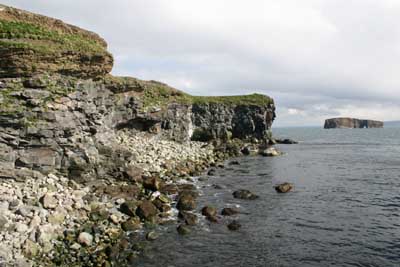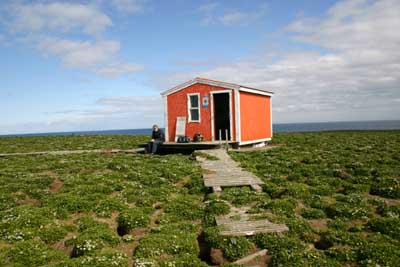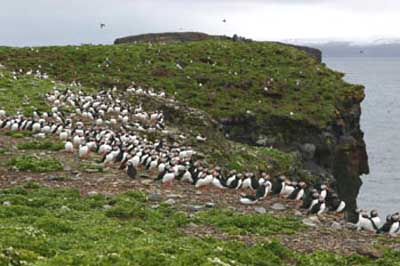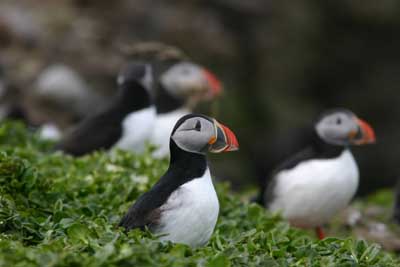20 years later .... Nature in the Mánár islands
Researching Sea Birds in
The purpose of the research tour was to survey the breeding colony of sea birds in Mánár islands, and also for Magnús to take photographs.
The bird life in Mánár island was surveyed in the years 1981-1984, with Ævar Petersen in charge. Therefore it was interesting to explore the changes that had been during those 20 years that have gone by.
The research team departed from Husavik harbour on the whale watching boat Athena, with captain Aðalsteinn Ólafsson in command. A little plastic boat was towed behind Athena and used to ferry men and equipment over to the island Lágey. A ladder on the west side of the island was used to climb up.
A small hut, built by puffin hunters from Sauðárkrókur who have been hunting puffins on the island for the last years, was used by the research team as a dwelling place.
Due to bad weather forecast the research group headed back home on Athena on Thursday evening.
The outcome of the research will be published later, but the basic outcome were as follow:
Major changes have been on the puffin’s breeding colony due to enormous changes in the vegetation. 20 years ago the island’s edges were without vegetation. Further in was a scurvy grass belt and grass. Today scurvy grass covers almost the whole island and no other flowering plants were found. Grass was absolutely gone, and the area which were without vegetation before were now covered with scurvy grass.
The size of the puffin’s breeding colony hasn’t been valued yet but puffin-holes were counted to estimate the number of breeding-pairs.
Holes in the radius of 4 metres circle were counted with a specific interval and the research zone covered the whole puffin breeding colony.
Black Guillemots were also counted, which was also done 20 years ago, and it seems that the number of Black Guillemots has decreased much.
Four bird species were seen/heard in Mánár island, that haven’t been spotted there before. Those birds were Ringed Plover, Northern Wheatear, Meadow Pipit, and Long-tailed Skua. Due to bad weather the breeding colony of seabirds in Háey couldn’t be surveyed.
The North East Iceland Nature Centre gives special thanks to Gentle Giants for the boat-ride to and from the island, landowners in Mánárbakki for permission to go to the island and also to puffin hunters in Sauðárkrókur for the use of the hut.
We will bring you more news from this research-project when the statistics are ready for publicity.

Mánár islands - a "face" of an islander can be seen on the southwest corner of the island!

The hut the research team used, was built by puffin hunters from Sauðárkrókur and placed on the island in 1997.

A nest from a Great Black-backed Gull.

Loads of puffins ....

